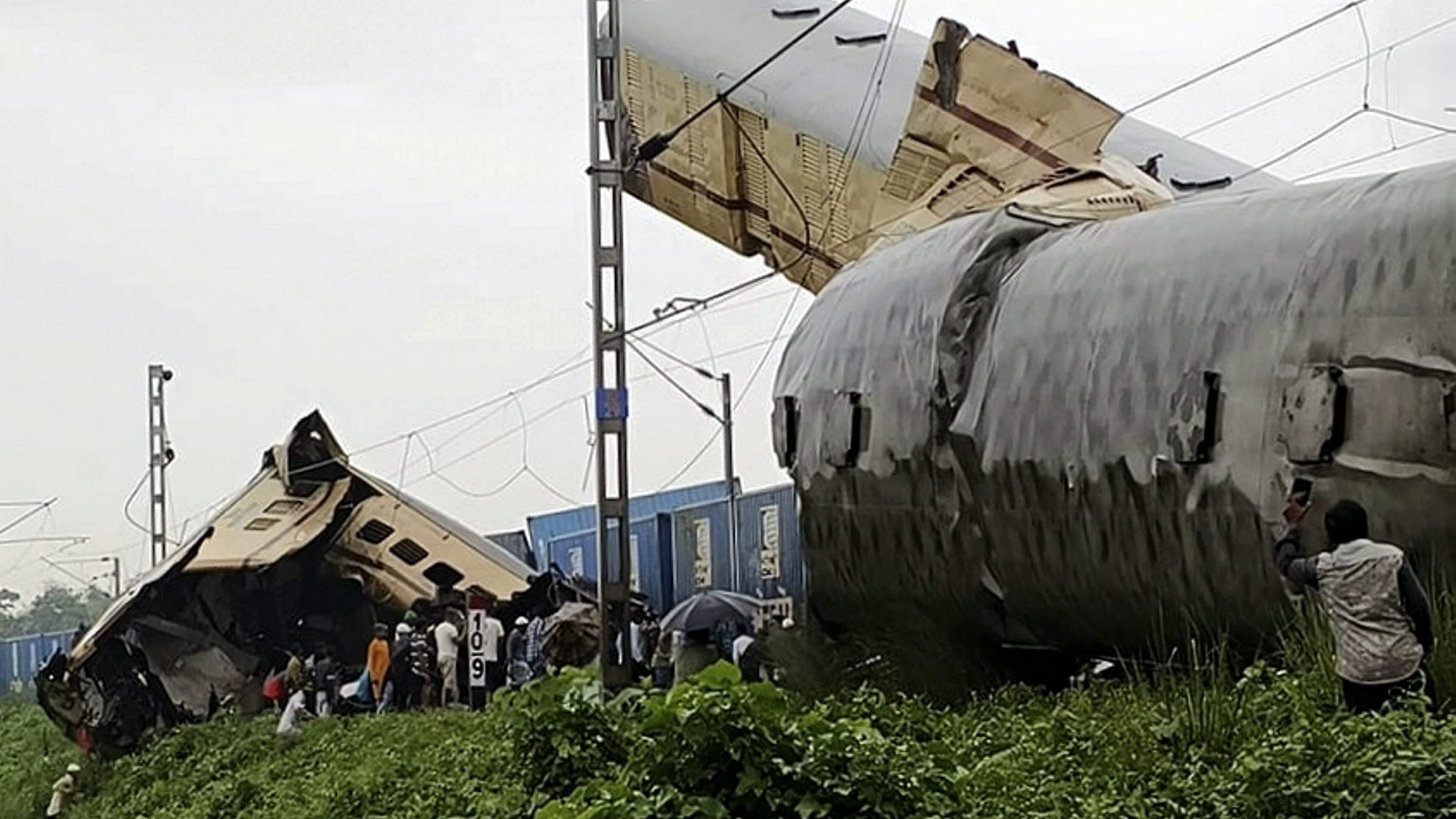
Locals gather at the accident site after a collision between the Kanchanjungha Express and a goods train, near Rangapani railway station in West Bengal.
Credit: PTI Photo
The train accident in West Bengal’s Darjeeling district on Monday in which 10 persons were killed and many others injured adds to the poor record of safety of Indian Railways.
The accident happened when a goods train collided with a stationary Kanchenjunga Express. It is believed to have been caused by human error, though it is yet to be finally confirmed by investigation. Last year, some 290 people were killed in an accident in Balasore in Odisha.
An accident on the Chennai-Howrah line claimed 15 lives after that. In February this year, a freight train travelled without a driver for about 70 km from Kathua in Jammu to Dasuya in Punjab. Accidents have taken place in many other parts of the country, though the casualties may not have been high. They cause loss of lives, damage to Railways’ assets, and disruption of services. They also affect the reputation of the Railways which is the country’s biggest carrier and transports millions of people and moves huge amounts of goods every day.
According to reports, the automatic signalling system in a section of the line was defective and the goods train driver disregarded the signal. There were announcements after the Balasore tragedy that safety measures would be enhanced to prevent or minimise mishaps.
Kavach, an automatic train protection system designed to prevent train collisions, was unveiled some years ago. It is yet to be installed fully across the railway system, and at the current pace, it will take many years to complete the work.
Apart from this, there are several other factors that contribute to train accidents. Defective or deficient infrastructure, technological inadequacy and unmanned crossings are some of them. Various committees have recommended measures like upgradation of infrastructure and reforms like the setting up of an independent safety commission but many of them are yet to be acted upon.
The government has recently placed a lot of emphasis on running high-profile trains like Vande Bharat and Namo Bharat. Bullet trains have also received much attention. Prime Minister Narendra Modi and his Japanese counterpart Fumio Kishida last week decided to expedite the Mumbai-Ahmedabad bullet train project.
These are ambitious plans and would provide the Railways with good optics and refurbish its image. But it is important to improve the safety standards in all trains and ensure that there is no danger to the life and limbs of passengers in trains. According to the Comptroller and Auditor-General of India (CAG), the spending on basic railway maintenance has fallen since 2017. Providing safe travel to passengers is the first and foremost responsibility of the Railways.